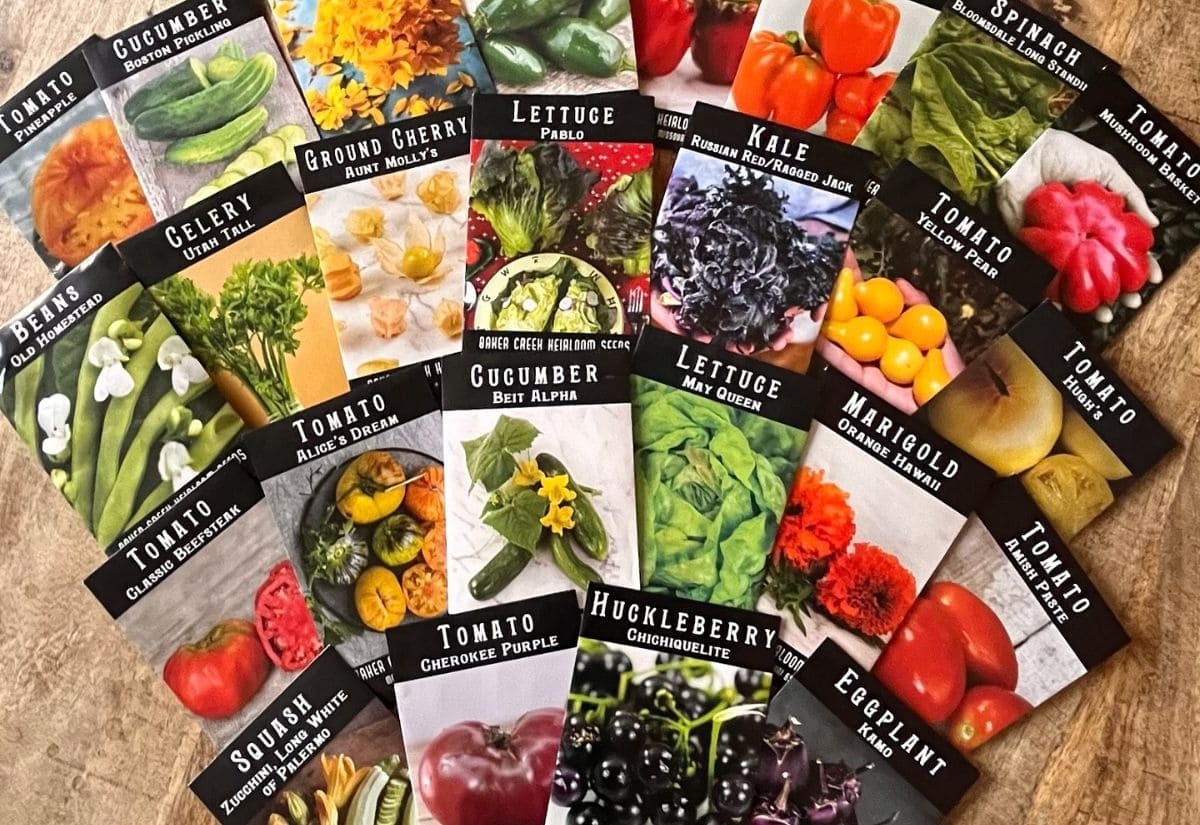
You heard that right, February is the perfect month to start and grow your seeds into seedlings. For some, it may be a bit early. It may be cold, there is loads you can start sowing already! Contrary to popular belief that it’s better to wait, I believe February is the perfect time to starting various vegetables and herbs seeds. You can begin with cold-hardy veggies for your spring garden and also get ahead with warm-season crops for summer.
This gives you the opportunity to enjoy the gardening process early on and to grow annual vegetables even in the colder part of winter. Plus, starting your seeds now means you’ll be rewarded with an early harvest come spring and summer! The trick is to use the best germination method for the type while factoring in the potential swings in February’s weather.
Some of the crops need to be started from seed indoors and transplanted outdoors when the weather is right. Others thrive best by direct sowing outdoors.
In this guide, I’ve put together a handy list of seeds perfect for sowing in February, complete with tips on how to sow them and nurture those early seedlings. Let’s dive into making your garden thrive together!
1: Long-Season Peppers & Eggplants
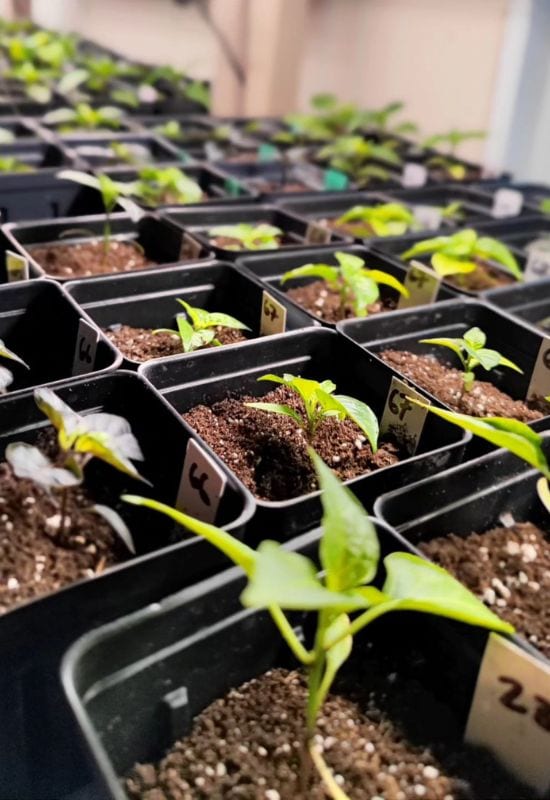
Long-season peppers and eggplants that have a “Days to Harvest” of 80 or more need to be started in February to get a decent crop by mid-to-late-summer. True tropical peppers like Aji Dulce, need to be started on February 1st or sooner. Even with a proper heat mat, these seeds can take up to four weeks to germinate!
How to Start Peppers and Eggplants in February
When sowing late-season pepper seeds, you want the soil temperature to be at least 65 degrees. Yet 80 degrees is even better, as these seeds are notorious for slow germination in cool soil.
The ideal sowing depth for pepper seeds is around half an inch or double the width of the seed. Then they need more than an inch of loose soil under the seed to give the roots enough depth to support the cotyledon leaves that first emerge on germination.
Pro Tip
Once pepper seedlings emerge from the soil, you need to remove them from the heat as soon as possible. Even the warmth of a heat mat will drive the seedlings to grow overly long. Within a day or two they can get “Leggy” to the point of falling over and won’t recover.
2: Tomatoes
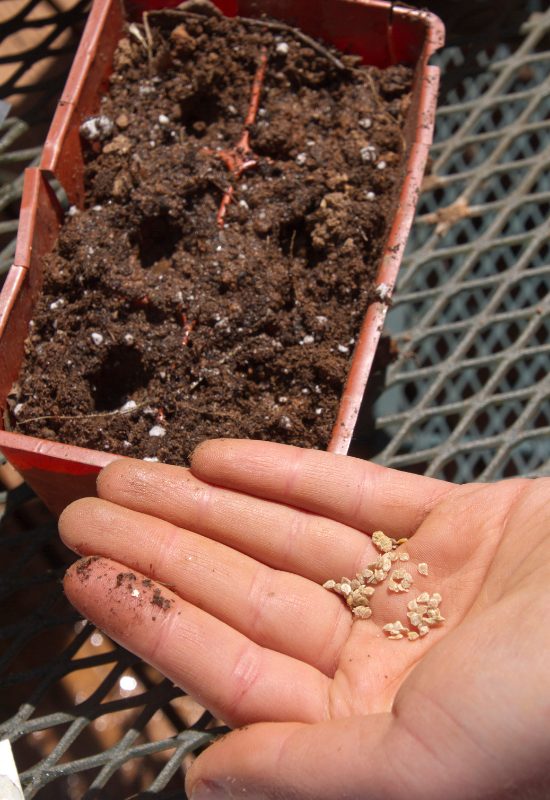
You can start tomatoes indoors in February in zones 6 and warmer otherwise it’s better to wait until early-to-mid-March. This will give the tomato seedlings the time they need to develop before planting outside when the warm days of spring and early summer preside over the land.
How to Start Tomato Seeds in February
I prefer peat plugs for starting tomato seeds in February. This lets you take advantage of the tomato’s ability to sprout roots from the stem when potted up.
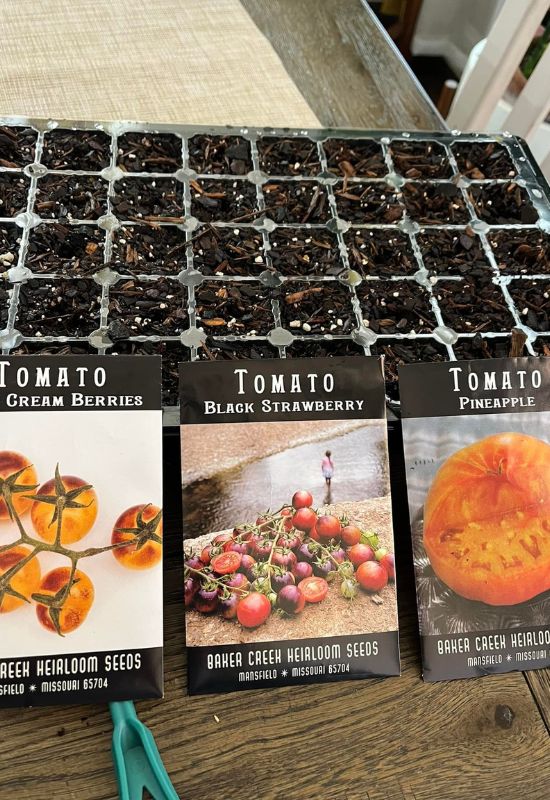
Hydrate the peat plug and bury 2 to 3seeds half an inch deep. Place in a heated potting tray that keeps the soil around 65 to 75 degrees.
Once the seedlings emerge, place the peat plugs at the bottom of a planting cup. Then gently add loose potting soil right up to the bottom of the leaves. Tomato plants will naturally grow roots out of the submerged stem. You can continue to add soil as the seedling grows toward the top of the pot. This will greatly reinforce its root base as an adult plant.
You can plant tomato seedlings outside a week or two after the average last frost date for your region.
3: Spinach
Spinach is arguably one of the best seeds to grow in February. It will grow contented in cool weather and if you don’t have it started by the spring thaw, you’ll be behind. As it tends to bolt easily after a few days in a spring warm spell.
Spinach has shallow roots, which lets you start an entire bed of it in a shallow tray in a sunny window or under some grow lights.
How to Grow Spinach Seeds in February
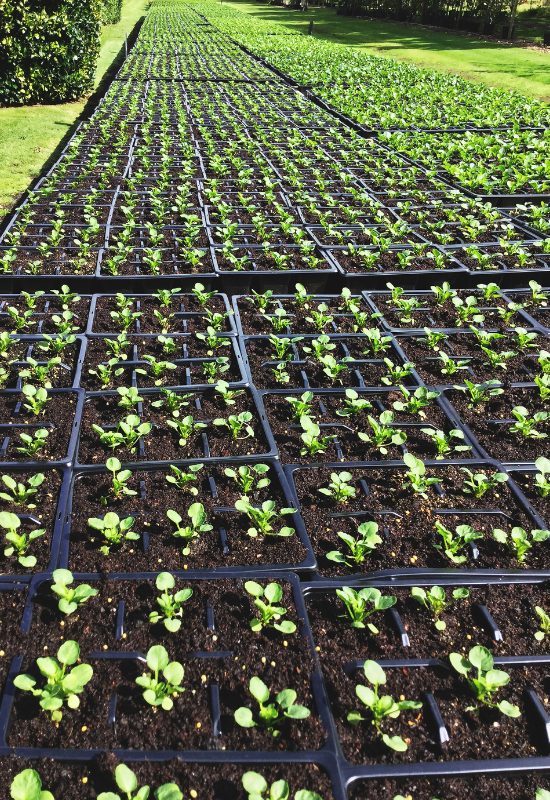
Spinach seeds need to be planted roughly half an inch deep with two inches between seeds and at least 12 inches between rows. You can buy spinach in seed tape for easy sewing.
Pro Tip
Soil temperature will greatly affect germination time with spinach seeds, which is one of the things that makes them fickle for spring planting.
At a soil temperature of just 40 degrees, spinach can take two to three weeks to germinate. If you put your spinach planting tray on top of a heated germination tray to keep the soil temperature around 70 degrees, it can germinate in less than 5 days!
Once the majority of the seeds germinate you need to take the spinach off the heat as soon as possible. Warm soil will cause the spinach seedlings to bolt, causing the leaves to be sparse and bitter.
After a few weeks, you can move your spinach planting tray outside. The ideal temperature for spinach seedlings is around 55 to 65 degrees.
4: Sugar Snap Peas
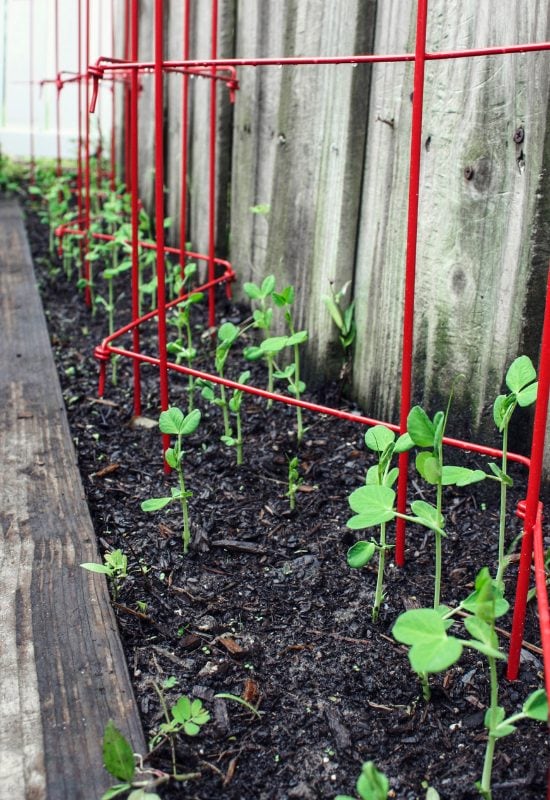
It’s been said that every gardener is a gambler. If this sounds like you, then growing sugar snap peas in February is the ultimate high-risk, high-reward thing you can do with a little soil and some seeds. You just have to know how to hedge your bets!
Within every sugar snap pea, lies a challenging dichotomy. Technically these “Snow Peas” will survive down to 20 degrees. I’ve had an entire field of them get burned under 3 inches of snow and didn’t lose a single plant when it all melted 3 days later!
The problem is in cold soil the high sugar content inside the seeds will cause them to rot. Even if they don’t rot in a few days, it can take weeks for sugar snap peas to germinate in soil under 40 degrees.
When you germinate them in 70-degree soil, you can be blessed with a tiny green seedling shoving its way through the soil in as little as 2 days.
How to Grow Sugar Snap Pea Seeds in February
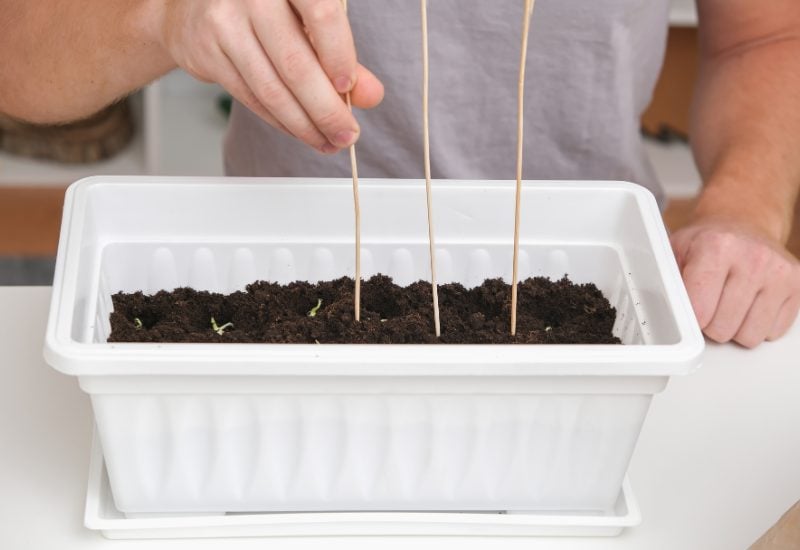
You can start the seeds in a folded wet piece of paper towel in a germination tray set to 70 degrees. When you start to see tiny roots emerge from the pea seed, you can gently move it to loose potting soil, planting it an inch deep.
Pro Tip
The root is very delicate, and if it breaks off the pea seed will die. The pea itself might also be soft, so you need to use a gentle touch and cover it with loose potting soil.
Once the green shoots of each pea plant are 2 inches tall above the soil, you can move them outside. Place them in an area that gets strong southeastern sun in the morning.
5: Kale & Collard Greens
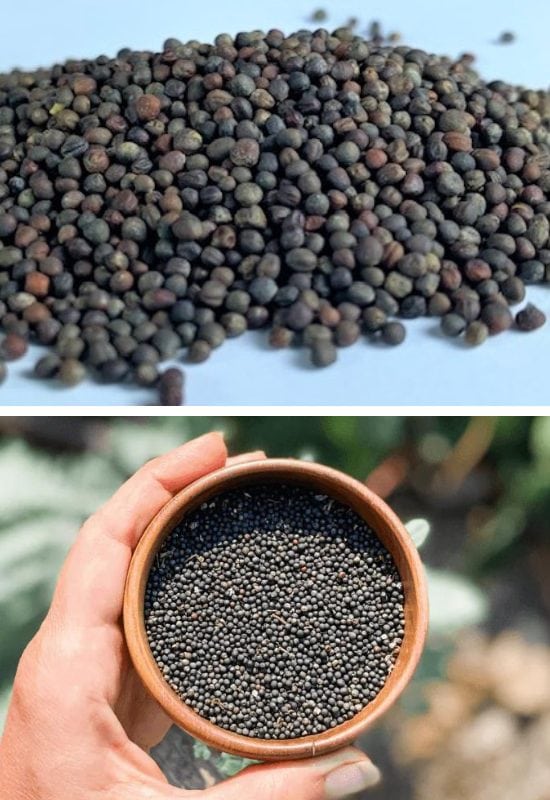
Kale and collard greens are another cold-hardy green that you must plan in February to get the most out of it. Kale can get leathery in the heat of summer, yet can come back to life with even more flavor in the fall, making it a great double-harvest success.
How to Grow Kale& Collards in February
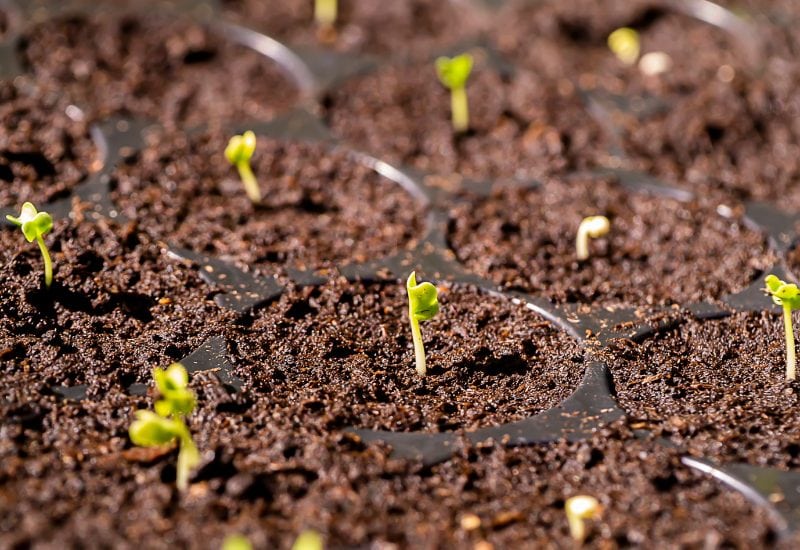
Like snow peas, kale seeds germinate best in warm soil, around 60 to 65 degrees. Like spinach, it needs to be planted around half an inch deep, and it’s available as seed tape.
However, the space between plants and rows needs to be at least 12 to 18 inches. So, I find it’s easier to start individual kale seedlings in small peat pots. Rather than planting them in rows followed by wasteful thinning.
6: Onion Seeds
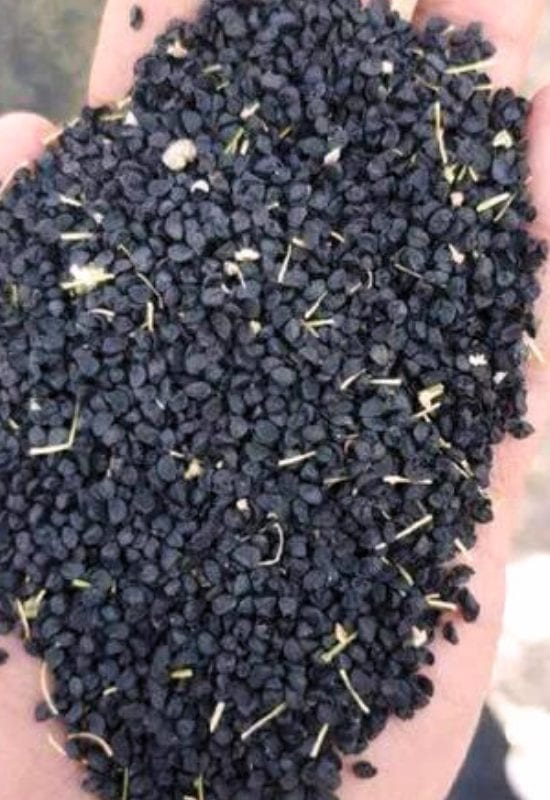
If you want to grow onions from seed and have a decent yield of scallions in spring and onions in the summer, you must start them in early February. This is the time of year when it’s virtually impossible to find onion sets in Zone 5 or colder, as they can’t survive the risk of freezing in transport.
How to Plant Onion Seeds in February
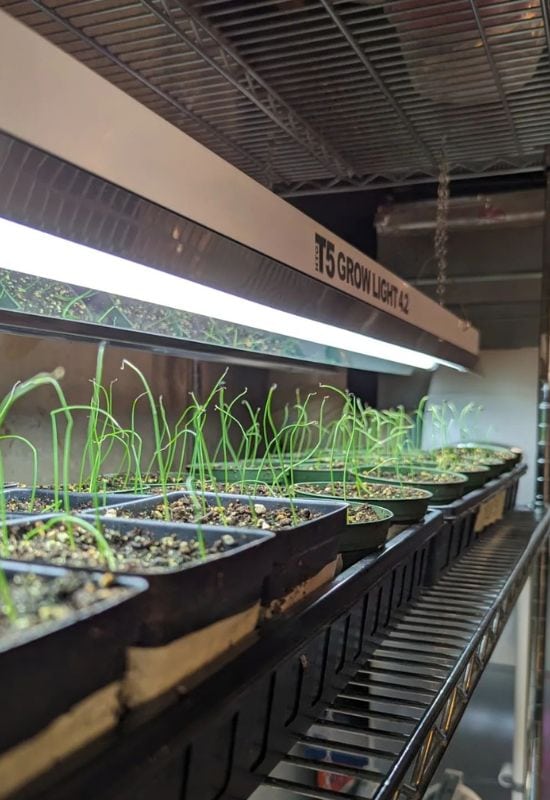
To get the best germination rate for planting onion seeds, you want to maintain a constant soil temperature of 70 to 75 degrees. If the soil temperature goes below 40 degrees, the germination process can stop and might not start again. A germination heat mat prevents this problem.
The onion seeds should be planted half an inch deep and covered lightly with loose potting soil. You want to use a watering strategy that moistens the soil without drenching it.
Once the onion seedlings are roughly two inches tall, you can carefully remove them from the potting soil to plant them deep for scallions or shallowly mounded for onion bulbs.
7: Brussels’ Sprouts
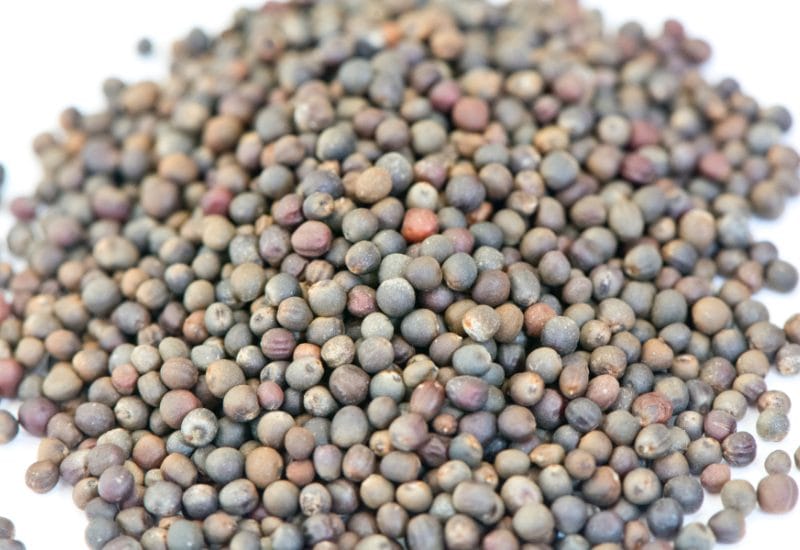
Starting Brussels’ sprout seeds in February gives you the head start you need to get a good harvest in the summer. They have the longest time to harvest of any member of the Brassica family.
How to Plant Brussels’ Sprouts Seeds in February
Soaking Brussels’ sprout seeds for 12 to 24 hours in warm water will help boost germination rate and time. Sow the seeds half an inch deep and moisten them with warm water.
Just like snow peas, brussels sprouts germinate best in warm soil around 65 to 70 degrees. It’s best to keep them over a heat mat, then move the seedlings off the heat as soon as they sprout.
When they’re ready to move outside, you should thin the seedlings, or plant them at least inches apart. This will give the plants space to spread out and grow.
8: Broccoli
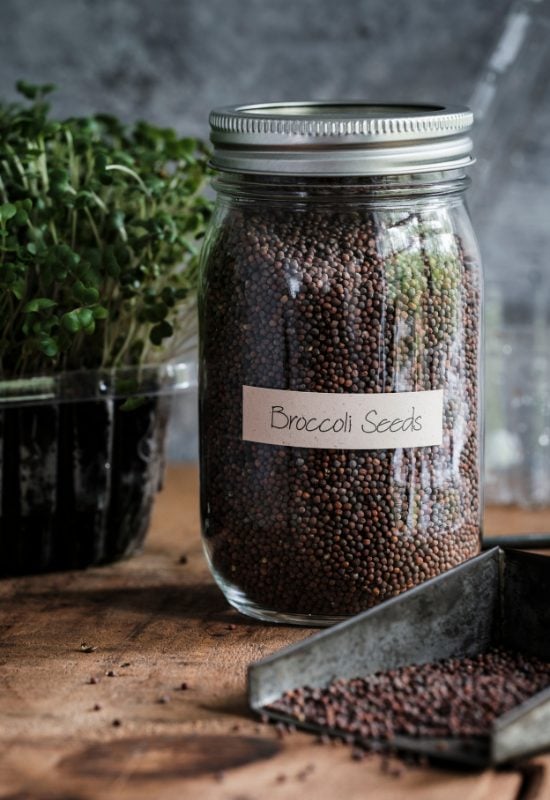
Broccoli is a great vegetable to start in February as it’s naturally cold hardy and prone to flowering or bolting in the heat of summer. They also tend to be forgiving if you can only give them 6 to 8 hours of natural light in the early days.
How to Plant Broccoli Seeds in February
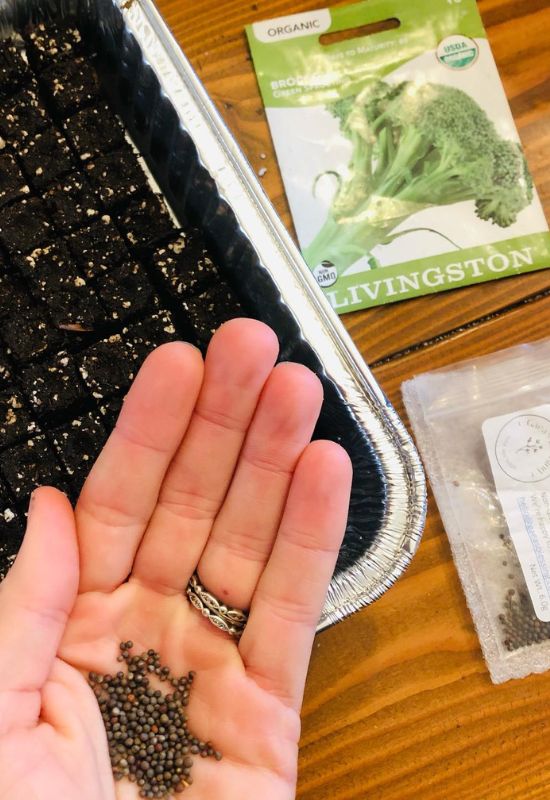
Lightly fill peat pots with seed starter potting soil, and lightly wet it. Place 2 to 3 seeds per cell and cover them with 1/2 inch or loose potting soil. Broccoli seeds germinate best in temperatures between 60 to 75 degrees.
When the seeds germinate, immediately thin them so there’s one broccoli seedling per cell. The seedlings will need at least 6 to 8 hours of direct sunlight per day. If you need to augment with grow lights, lower them to 2 to 4 inches above the seedlings. This will prevent the broccoli from getting leggy and promote the kind of thick stalks it will need later to thrive outdoors.
9: Iceberg Lettuce
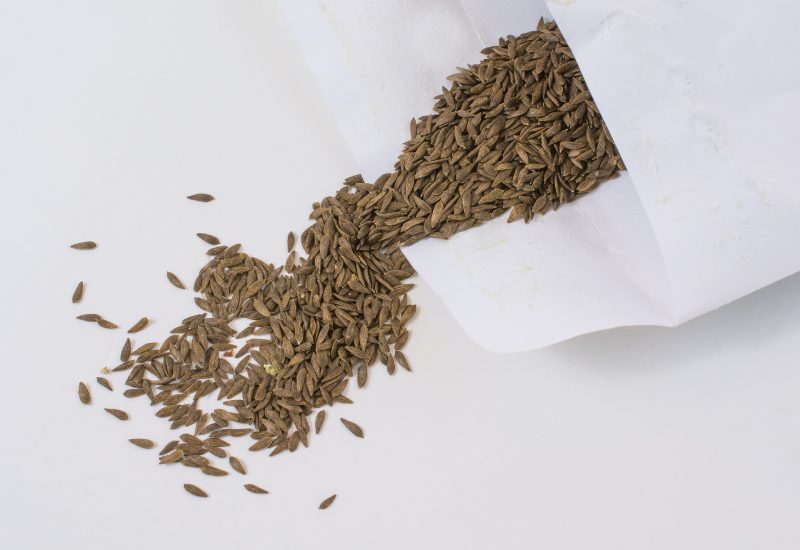
Planting iceberg lettuce seeds in February gives them the best chance to form solid heads before the heat of summer can affect them. However, iceberg lettuce does require some slightly different growing techniques than romaine and loose-leaf lettuces.
How to Grow Iceberg Lettuce in February
Starting iceberg lettuce seeds indoors starts with filling peat pots with seed starter potting mix. The peat pot makes it easier to transplant the seedlings later with a reduced risk of transplant shock. It also makes it easier for the soil to retain moisture as the seedling grows.
Plant 3 to 4 seeds per cell and cover with 1/2 inch or loose potting soil. You want your heat mat to keep the soil in the cells around 60 to 70 degrees.
When the seedlings emerge, thin so there’s just one plant per cell. Then remove them from the heat to keep them from bolting or getting leggy.
Water the iceberg seedlings near the roots without misting over the plants’ leaves. Excess water can cause wilted spots on the head and could promote damping off. When transplanting into the garden, space the iceberg lettuce plants with 12 inches between plants and 18 inches between rows.
10: Romaine and Looseleaf Lettuce
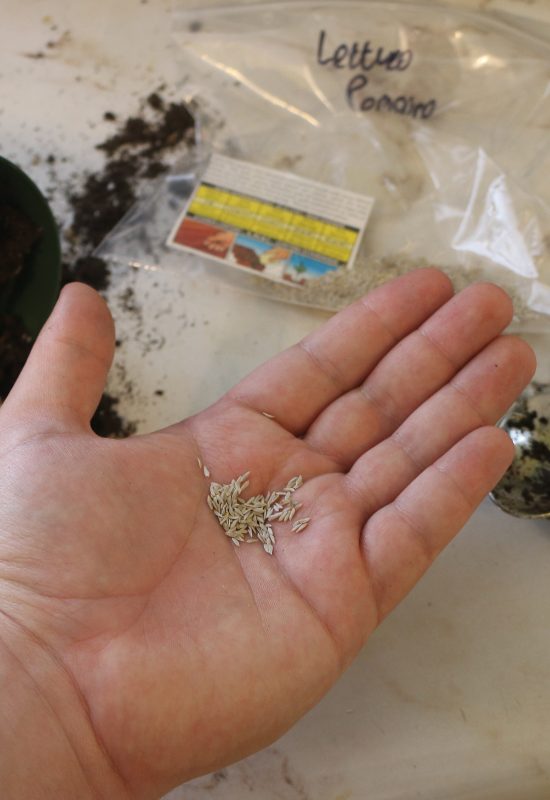
Romaine and looseleaf lettuce are great to start in February, as they do best in cool weather. Young seedlings can also be prone to damping off in the heavy rains of spring, so starting them indoors gets your lettuce seedlings off on the right foot.
How to Grow Romaine Lettuce in February
Starting loose leaf lettuce seeds indoors starts with filling peat pots with seed starter potting mix. The peat pot makes it easier to transplant the seedlings later with reduced risk of transplant shock. It also makes it easier for the soil to retain moisture as the seedling grows.
Plant 2 to 3 seeds per cell and cover with 1/4 inch or loose potting soil. You want your heat mat to keep the soil in the cells around 65 to 70 degrees.
Immediately thin the seedlings after germinating so there’s just one plant per cell. Then remove them from the heat to keep them from bolting or getting leggy.
Fill the potting tray with half an inch of water. The peat pots and potting soil can then absorb the moisture from below to avoid the lettuce damping off.
11: Cabbage

One of the advantages of starting cabbage in February is to let it grow as much as possible before pests like cabbage moths, and their larvae, get a chance to attack it.
However, you do have to be quick about taking the cabbage off the heat once it germinates. Left too long on the heat mat cabbage seedlings will grow leggy, rather than develop heads with a strong root base.
How to Grow Cabbage Seeds in February
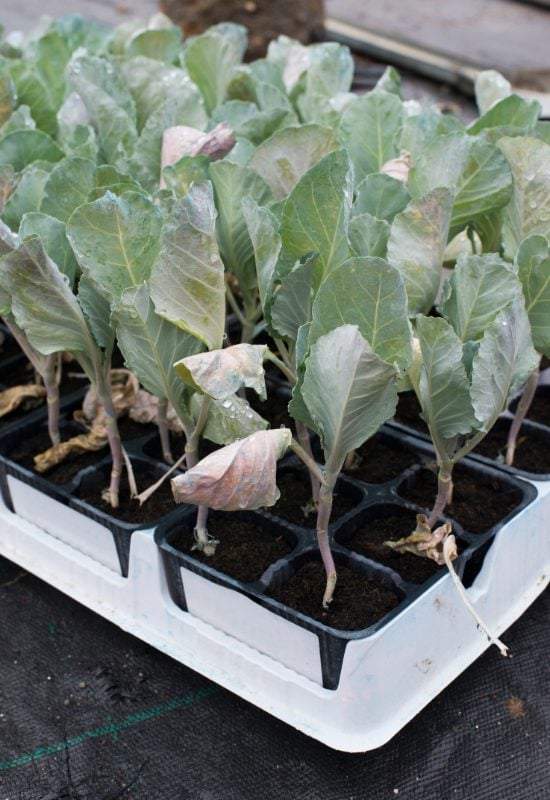
You can start cabbage seeds in peat plugs, but I find they’re easy to work with if you start the seeds in peat pots with seed starter potting mix. They’re easier to transplant later and the soil retains moisture better as the seedling grows.
Plant 2 to 3 seeds per cell, roughly 1/4 inch deep. You want your heat mat to keep the soil in the cells around 65 to 70 degrees.
Thin the cabbage seedlings immediately after germinating so there’s just one plant per cell. Then remove them from the heat to keep them from getting leggy.
Lower your grow lights down to 2 to 3 inches from the cabbage seedlings. This will promote head development and further reduce the risk of the seedlings getting leggy.
When transplanting into the garden, space the cabbage seedlings with at least 12 inches between plants and 18 inches between rows. Ideally in a location that gets good morning light and partial shade from mid-afternoon on. This will reduce the risk of sun scalding on the heads in the heat of summer.
12: Swiss Chard
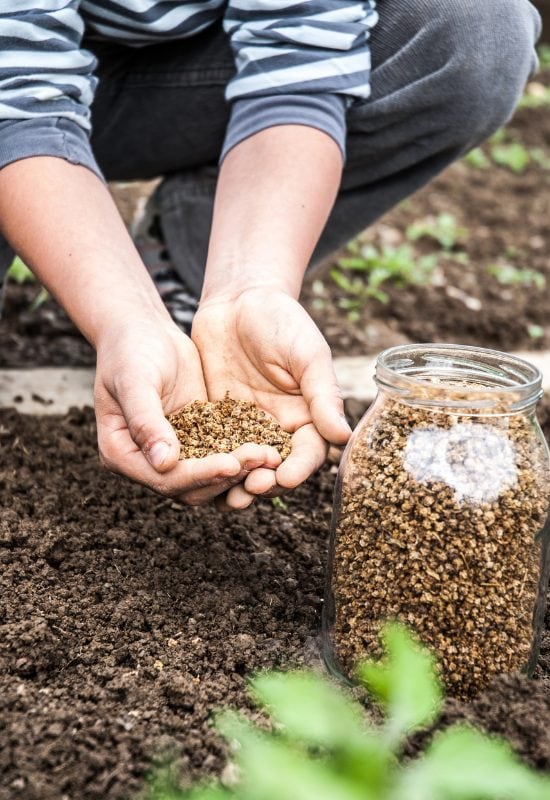
Swiss chard is a lovely vegetable to grow in February and beyond. It’s colorful, flavorful, and reasonably cold-hardy. It also thrives for strawbale gardening! Staring the seeds indoors gives them a boost for the growing season, and lets you harvest them without worry in spring.
How to Grow Swiss Chard in February
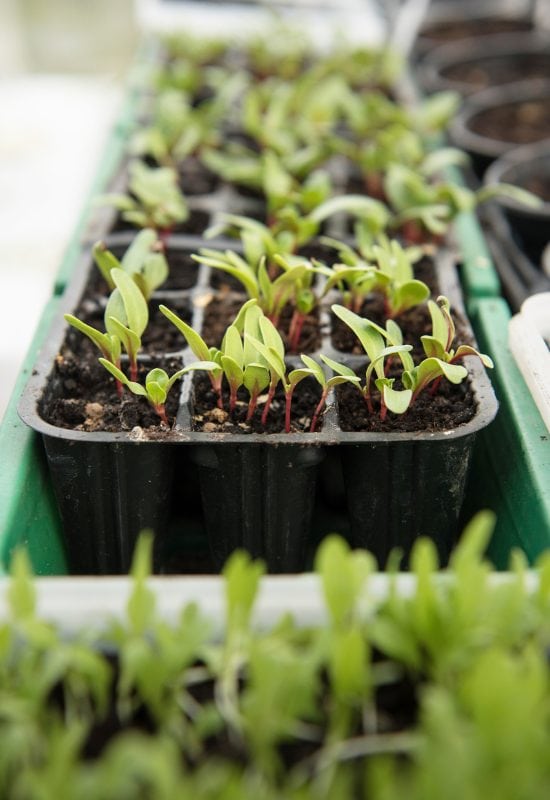
I prefer to plant Swiss chard seeds in peat pots in late February rather than peat plugs. It lets me transplant the seedlings directly to the planting beds when the outdoor weather is just right.
Plant 1seed per cell, and cover with half an inch of seed starter potting soil.Ideally, the heat mat keeps the soil in the cells around 65 to 70 degrees. Multiple shoots can come from one seed. If you plant multiple seeds per cell, you won’t be able to safely thin the seedlings.
Remove the Swiss Chard seedlings from the heat within 24 to 48 hours after germinating to keep them from getting leggy. Lower your grow lights down to 2 to 3 inches to keep the shoots from growing too tall too fast. This is especially important with fluorescent lights, which can cause the underside of the leaves to turn purple.
Transplant Swiss chard outside 2 to 4 weeks before the last frost date for your region. It can handle temperatures down to the mid-20s. but will stop growing under 32 degrees. So, you don’t want to put it out too early, and you can keep it indoors if the spring weather takes a turn for the worse.
13: Radishes
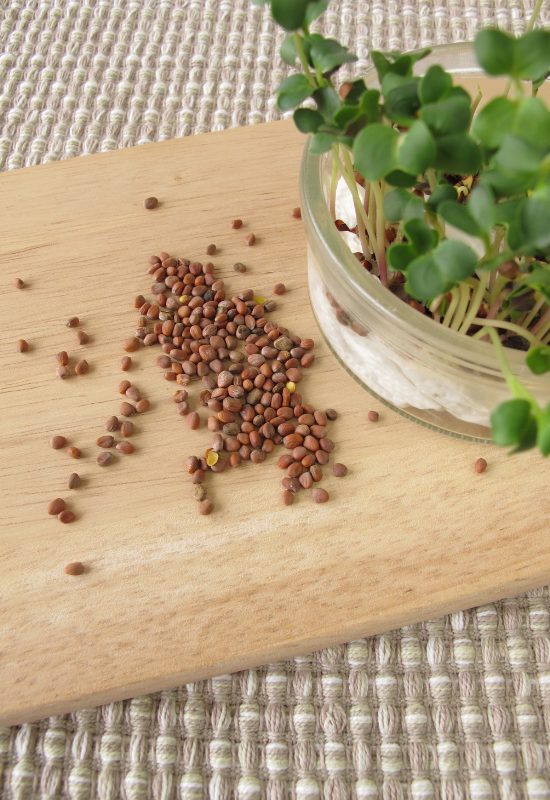
Their superior cold hardiness and willingness to bolt in warm temperatures mean you truly need to plant radishes in February to get a proper crop. They’re great for planting in the same spot where you’ll put heat-loving peppers or eggplants, as the radishes get harvested just before you plant the seedlings.
How to Plant Radish Seeds in February
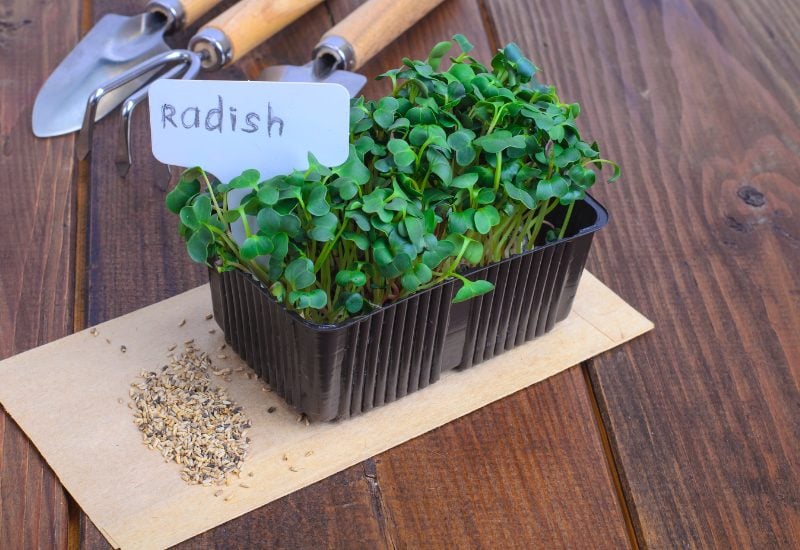
As root vegetables radishes don’t take well to direct transplanting. If you live in Zone 6 or warmer, you can plant them directly into the garden bed in mid-to-late February, depending on the local weather.
If you live in zone 5 or colder, you can plant radish seeds in a container or planter that provides at least 12 inches of soil. It might be possible to plant radish seeds in late February in a peat pot, and then transplant them to the potting beds when the ground thaws. The peat pot will decompose on its own as the roots push through it.
14: Okra
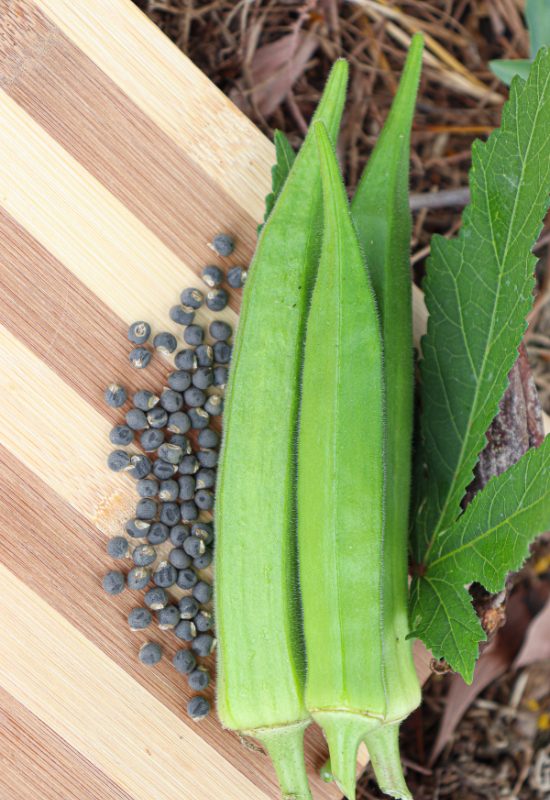
Starting okra seeds in February is a good idea for Zone 5 and warmer, as it lets the plant fully mature by the peak of the summer growing season. If okra is planted in cool soil under 70 degrees, it can sulk and linger.
How to Start Okra Seeds in February
When starting okra seeds, I prefer to use peat pots with 2 to 3 inches of potting soil. Then I lay 2 to 3 okra seeds on top of the soil and cover it with another ¾ to 1-inch of loose potting soil. This depth helps the eventual seedling develop deep strong roots.
Okra loves warm soil, but you still shouldn’t leave the seedlings on the heat mat for more than 48 hours after they emerge.
Set into a tray with half an inch of water. The peat pot and the potting soil will draw the water up to the okra seedling’s roots without the risk of damping them off. It also helps to turn on an oscillating fan set too low. The air circulation helps prevent mildew and damping off. It also gets the okra seedlings accustomed to wind, which will be a factor when the plant starts fruiting.
You can transplant the okra seedlings in the garden 3 to 4 weeks after the last average frost date for your region, or once the soil temperature reaches a consistent 70 degrees.
Conclusion
There are a lot of seeds that you need to start in February to make the most out of cool soil conditions or give yourself the best chance of a bountiful summer harvest.
Radishes, spinach, and snow peas top the list, for cool-season success. You can also start eggplants, tomatoes, and late-season peppers to make sure the plants are mature enough to produce by midsummer.
The challenge with starting any seeds in February is making sure you have the right soil temperature for optimum germination. If the soil is too cold and wet the seeds might rot before they get a chance to germinate.
Most seedlings need to be taken off the heat and allowed to grow in cool soil after they emerge. Including late-season peppers and eggplants, which can become leggy and fall over if they’re left in warm soil for even a day too long on a heat mat.

Written By
Amber Noyes
Amber Noyes was born and raised in a suburban California town, San Mateo. She holds a master’s degree in horticulture from the University of California as well as a BS in Biology from the University of San Francisco. With experience working on an organic farm, water conservation research, farmers’ markets, and plant nursery, she understands what makes plants thrive and how we can better understand the connection between microclimate and plant health. When she’s not on the land, Amber loves informing people of new ideas/things related to gardening, especially organic gardening, houseplants, and growing plants in a small space.
